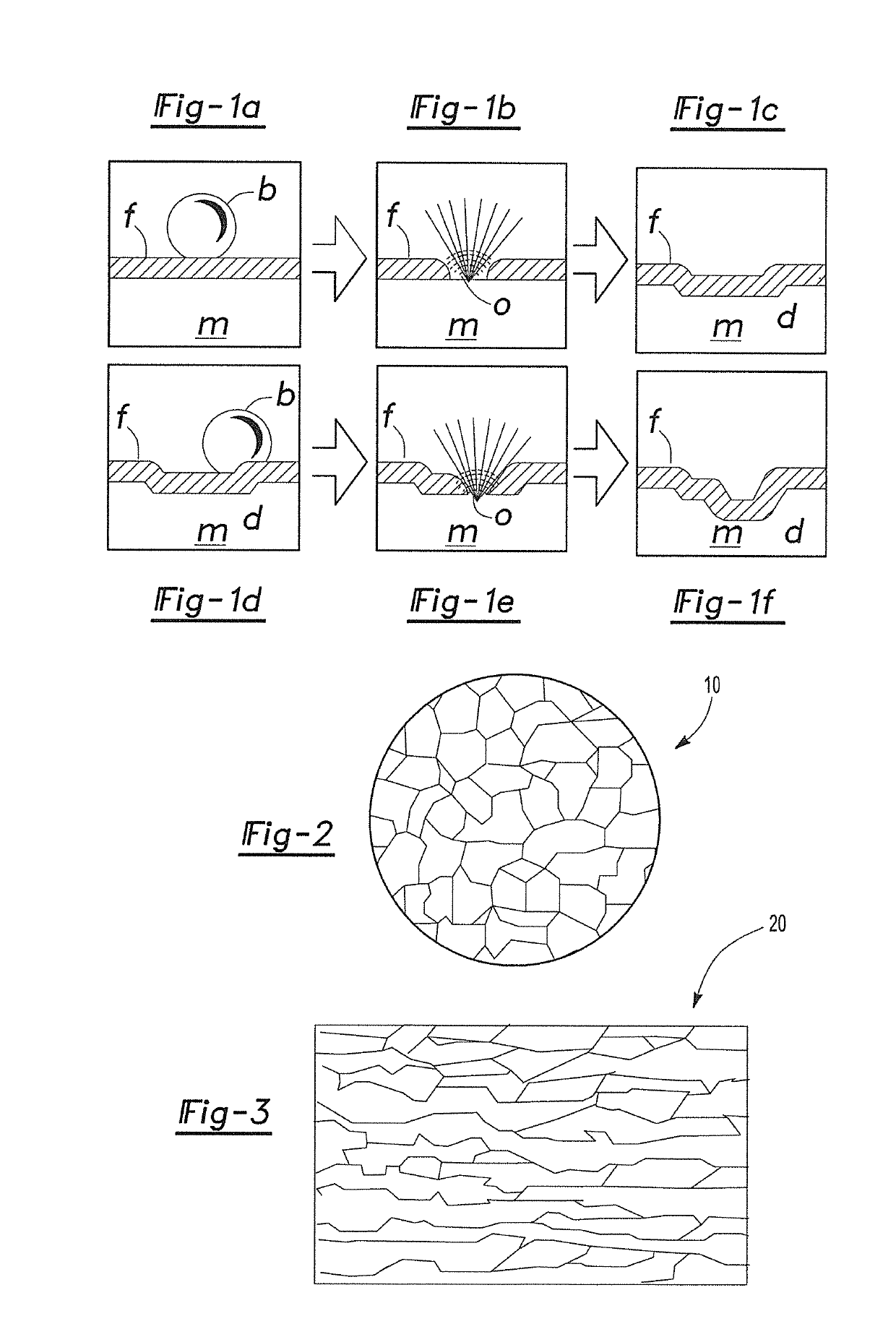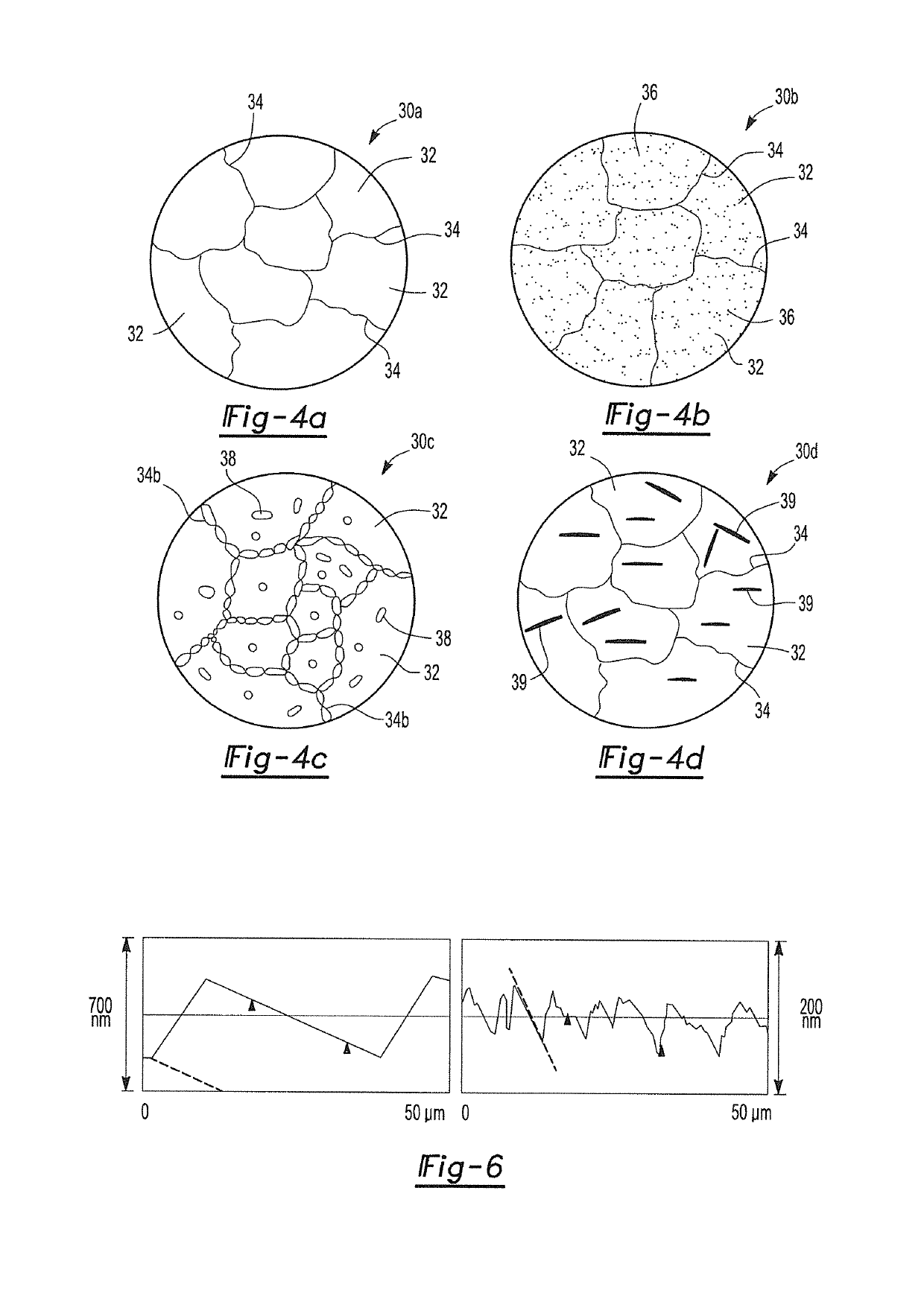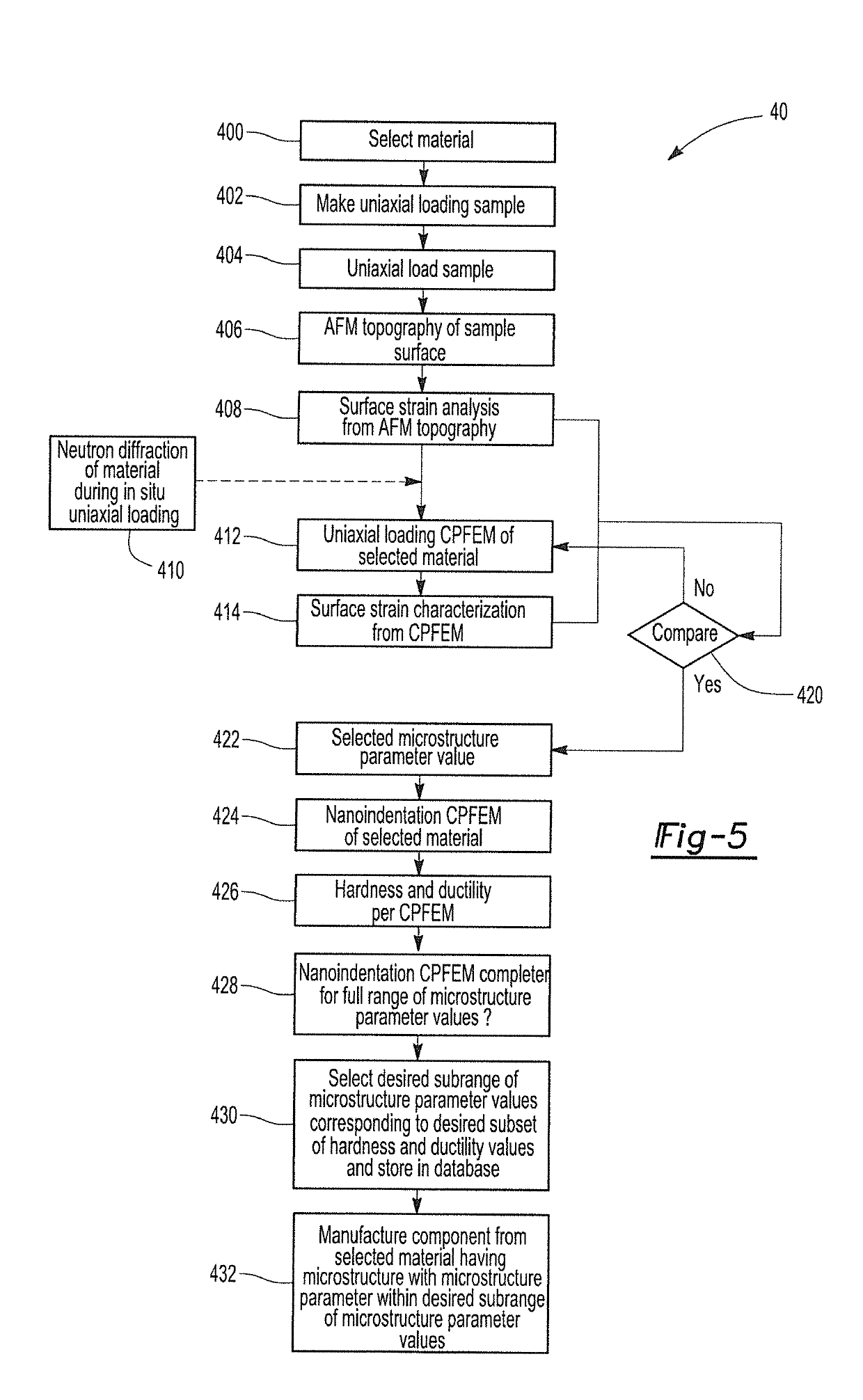Process for design and manufacture of cavitation erosion resistant components
a technology of cavitation erosion and manufacturing process, which is applied in the direction of computer control, program control, instruments, etc., can solve the problems of time-consuming and expensive testing, and achieve the effect of accurate surface strain characterization
- Summary
- Abstract
- Description
- Claims
- Application Information
AI Technical Summary
Benefits of technology
Problems solved by technology
Method used
Image
Examples
Embodiment Construction
[0033]A process for designing and manufacturing a cavitation erosion (CE) resistant component is provided. The process provides a substantial improvement for material design related to cavitation erosion resistance and reduces time and cost related to the design and manufacture of anti-cavitation erosion equipment such as high pressure pumps.
[0034]The process can include determining operation conditions in a given industrial application that is susceptible to cavitation erosion. Such operation conditions can include a given liquid environment, pressure of the liquid environment, possible flow rate of the liquid environment, and the like. The process also includes selecting a material that may or may not be used in the liquid environment, such materials typically including steels, stainless steels, nickel alloys, aluminum alloys, titanium alloys, copper alloys, and the like. Once a given material or alloy is selected, a sample of the selected material, e.g. a tensile sample, is subje...
PUM
| Property | Measurement | Unit |
|---|---|---|
| grain sizes | aaaaa | aaaaa |
| grain sizes | aaaaa | aaaaa |
| grain sizes | aaaaa | aaaaa |
Abstract
Description
Claims
Application Information
 Login to View More
Login to View More - R&D
- Intellectual Property
- Life Sciences
- Materials
- Tech Scout
- Unparalleled Data Quality
- Higher Quality Content
- 60% Fewer Hallucinations
Browse by: Latest US Patents, China's latest patents, Technical Efficacy Thesaurus, Application Domain, Technology Topic, Popular Technical Reports.
© 2025 PatSnap. All rights reserved.Legal|Privacy policy|Modern Slavery Act Transparency Statement|Sitemap|About US| Contact US: help@patsnap.com



